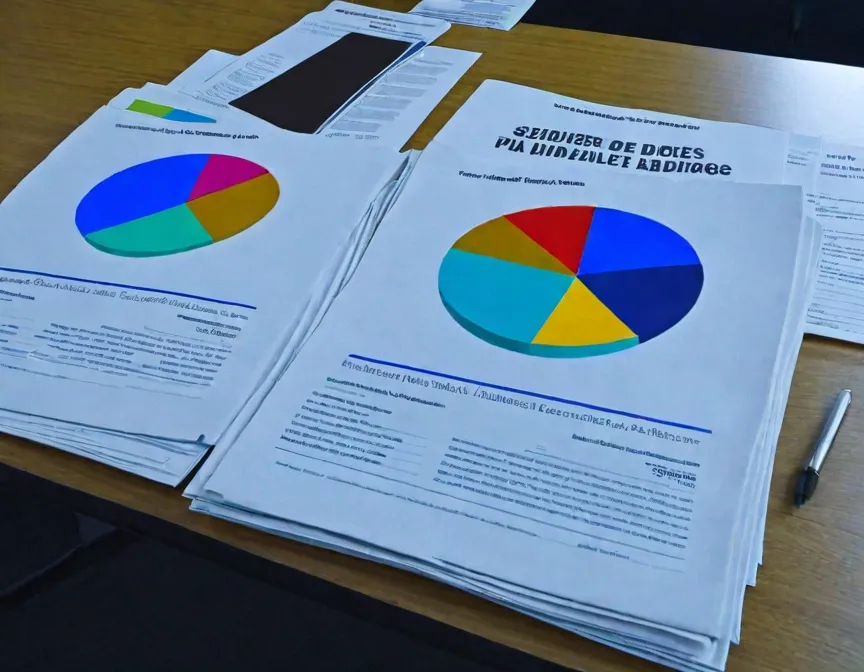Profitability Analysis: Return on Total Capital
ROTC assesses how efficiently a company generates profit for its contributors, indicating its financial performance and overall value.

Return on Total Capital: Unleashing the Power of Analogies and Examples to Evaluate Profitability
Introduction
In the world of finance, understanding a company's profitability and its capacity to generate returns for different capital providers is paramount. Return on Total Capital (ROTC) emerges as a crucial ratio that assesses profitability relative to all non-trade capital sources. This article delves into the concept of ROTC, offering an analogy-filled and example-rich exploration of its calculation, interpretation, and significance when evaluating a company's profitability and performance.
Understanding Return on Total Capital: Cracking the Profitability Code
Return on Total Capital (ROTC) serves as a measuring stick for a company's profitability compared to all non-trade capital providers. By quantifying the return generated on the total capital employed within the business, it reveals how effectively the company generates profits for all capital sources, regardless of their origin.
ROTC as a Car Trip
To better understand ROTC, envision a long car trip. The car represents the company, while the passengers represent the various capital providers. The total capital employed represents the number of passengers and their collective contributions. ROTC measures how well the car trip satisfies the passengers and reflects the efficiency of the vehicle in delivering a positive experience for everyone.
Interpretation of Return on Total Capital: The Passenger Satisfaction Gauge
ROTC provides invaluable insights into the profitability generated for all non-trade capital providers. Much like a passenger satisfaction gauge, it evaluates the company's ability to deliver returns to different capital sources, such as debt and equity holders. A higher ROTC implies greater profitability relative to the total capital employed, a favorable outcome for all capital providers. Conversely, a lower ROTC suggests lower profitability concerning the total capital employed.
Calculation of Return on Total Capital: Crunching the Numbers
To calculate ROTC, we need to determine both the numerator (net income + after-tax interest cost) and the denominator (total capital).
Numerator
The numerator represents the company's net income, which is the profit generated after accounting for expenses, taxes, and interest costs. Similar to passengers' satisfaction, it captures the overall experience of the car trip, including costs.
Denominator
The denominator represents the total capital employed in the business. It encompasses the sum of all capital providers' contributions, such as debt, equity, and other non-trade capital. Just like counting the number of passengers in the car trip analogy, we add up the total capital provided by various sources.
Significance of Return on Total Capital: The Power of Happy Passengers
ROTC plays a pivotal role in assessing a company's profitability relative to all non-trade capital providers. It sheds light on the company's ability to generate returns for different capital sources. A higher ROTC indicates more efficient utilization of capital and value creation for capital providers. By comparing ROTC with industry benchmarks and historical performance, we can evaluate a company's profitability and its effectiveness in delivering returns to its capital providers.
Alternative Calculation of ROTC: The Smooth Road of Operational Profitability
ROTC can also be calculated using EBIT (Earnings Before Interest and Taxes) as the numerator. This measure excludes the effects of taxes and interest costs, offering a clearer view of the company's operational profitability relative to total capital. It removes the toll booths and traffic conditions that may hinder the passengers' satisfaction, focusing solely on the car's performance.
Example: An Exhilarating Car Trip with Company XYZ
Let's embark on an exhilarating car trip with Company XYZ, using the following information:
Net Income: $1,000,000
After-Tax Interest Cost: $100,000
Total Capital: $10,000,000
In our analogy, Company XYZ's car trip represents its financial performance:
ROTC = ($1,000,000 + $100,000) / $10,000,000
ROTC = $1,100,000 / $10,000,000
ROTC = 0.11 or 11%
During this thrilling journey, Company XYZ achieved a Return on Total Capital (ROTC) of 11%. This means that for every dollar of total capital employed, the company generated a profit of $0.11. With such a high ROTC, the passengers (capital providers) were delighted by the efficient utilization of capital and the remarkable profitability relative to the total capital employed.
Conclusion: Empowering Profitability Evaluation with Analogies and Examples
Return on Total Capital (ROTC) stands as a vital metric for assessing a company's profitability relative to all non-trade capital providers. By measuring the company's capacity to generate returns for different sources of capital, such as debt and equity holders, ROTC unveils the efficiency of capital utilization and value creation for capital providers. Armed with the ability to analyze ROTC, investors and analysts can effectively evaluate a company's profitability and its success in delivering returns to its capital providers. Just like a memorable car trip, ROTC lets us appreciate the journey and ensures that all passengers have a rewarding experience.
This article takes inspiration from a lesson found in FIN 689 at Pace University.